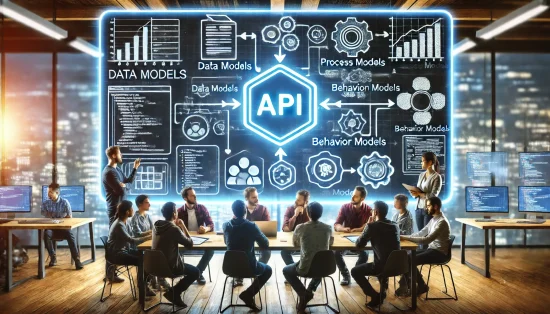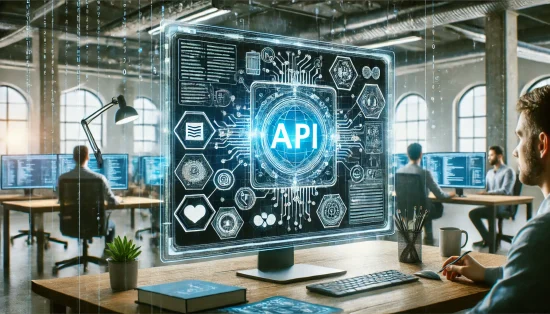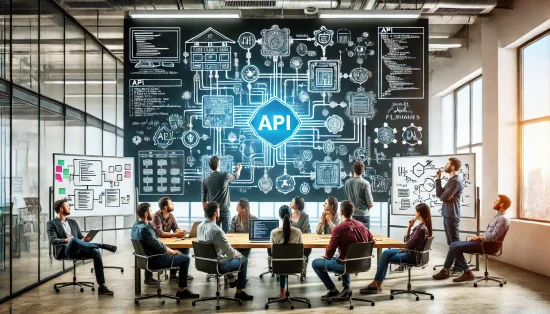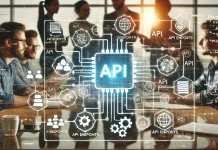In today’s interconnected digital world, APIs (Application Programming Interfaces) have become the backbone of modern software development, enabling applications to communicate, exchange data, and function seamlessly together.
However, achieving API success is not just about writing efficient code; it’s also about careful planning and design. This is where wireframing and modeling come into play. But what exactly are these practices, and why are they so crucial for API development?
What is API Wireframing and Why Does it Matter?
API wireframing is a visual planning process used to map out the structure and functionality of an API before the actual development begins.

Just as an architect creates blueprints before constructing a building, API developers use wireframing to visualize the API’s endpoints, data flows, and interactions. But why does this matter?
Wireframing allows developers to see the bigger picture and anticipate potential issues before writing a single line of code.
It helps teams communicate more effectively, reduces misunderstandings, and ensures everyone is on the same page about how the API should function. Ultimately, it lays a solid foundation for a successful development process.
How Does Modeling Contribute to API Development?
Modeling in API development involves creating representations of the various components and their relationships within the API architecture.
This can include data models, which define the structure of the data exchanged, and process models, which outline the workflow and sequence of operations.
By creating models, developers can identify potential performance bottlenecks, security vulnerabilities, or integration challenges early on.
Modeling also ensures that the API is designed to scale and adapt to future changes, reducing maintenance costs and the likelihood of major redesigns later.
Why Are Wireframing and Modeling Crucial for API Success?

Why should developers invest time in wireframing and modeling? Here are three key reasons:
- Improves Clarity and Communication: Wireframing and modeling create a shared visual representation of the API’s design. This helps all stakeholders, from developers to project managers, understand the intended functionality, reducing miscommunication and aligning expectations.
- Reduces Errors and Accelerates Development: By identifying potential issues early, wireframing and modeling help avoid costly errors that can arise during coding. This accelerates the development process, saving both time and money.
- Enhances User Experience (UX): APIs that are well-planned and modeled tend to be more user-friendly and easier to integrate. This leads to a better experience for end-users and fosters higher adoption rates.
What Are the Different Types of API Wireframes and Models?
There are various types of wireframes and models used in API development, each serving a unique purpose:
- Low-Fidelity vs High-Fidelity Wireframes: Low-fidelity wireframes are basic sketches or outlines that provide a simple view of the API structure, while high-fidelity wireframes offer a detailed, interactive representation. Low-fidelity wireframes are quicker to create and useful in the initial stages, while high-fidelity wireframes provide a more comprehensive view for advanced planning.
- Data Models: These define the structure, format, and relationships between the data that the API will handle. Data models ensure that the API is capable of managing data efficiently and securely.
- Process Models: Process models map out the workflow of the API, detailing how data flows through different components and what processes are involved. This helps in identifying potential bottlenecks and optimizing the performance.
- Behavior Models: These focus on how the API should behave under different scenarios or conditions, such as handling errors or managing different user permissions.
How Can You Choose the Right Tools for API Wireframing and Modeling?

Choosing the right tools for wireframing and modeling can make a significant difference in the development process. Here’s how you can make the best choice:
- Swagger: A popular tool that provides an interactive interface for designing, documenting, and testing APIs. It is particularly useful for creating high-fidelity wireframes.
- Postman: Known for its testing capabilities, Postman also allows for the creation of mock servers and environments, making it a good choice for both wireframing and modeling.
- UML Diagrams: Unified Modeling Language (UML) diagrams are ideal for complex projects that require detailed modeling of data and processes. They provide a standardized way to visualize the design.
- Tips for Selecting the Best Tool: Consider factors such as project complexity, team size, budget, and the need for collaboration when selecting a tool. For smaller projects, simpler tools like Postman might be sufficient, while larger projects may benefit from more robust tools like Swagger or UML diagrams.
How Do You Effectively Implement Wireframing and Modeling in Your API Development Process?
To effectively implement wireframing and modeling in your API development process, follow these steps:
- Start with Requirements Gathering: Understand the business needs, target audience, and technical requirements.
- Create Initial Wireframes: Begin with low-fidelity wireframes to outline the basic structure and functionalities of the API.
- Develop Models: Use data, process, and behavior models to map out detailed aspects of the API.
- Collaborate and Iterate: Involve all stakeholders in reviewing and refining the wireframes and models. Use feedback to make iterative improvements.
- Test and Validate: Use mock servers and environments to test the API’s design against real-world scenarios.
- Integrate into Development: Once validated, integrate the wireframes and models into the development phase, ensuring that all teams have access to the latest versions.
What Are the Key Benefits of Using Wireframing and Modeling in API Development?

Wireframing and modeling offer several benefits that directly impact API success:
- Improved Scalability: A well-planned API is easier to scale as it grows, ensuring it can handle increased loads without degradation in performance.
- Reduced Errors and Debugging Time: Identifying issues during the wireframing and modeling stages means fewer bugs and errors in production, reducing debugging time.
- Faster Time to Market: By clarifying requirements and catching potential issues early, wireframing and modeling speed up the overall development process.
- Enhanced Security: Modeling helps identify and address potential security vulnerabilities early in the development process.
What Common Mistakes Should You Avoid When Wireframing and Modeling APIs?
While wireframing and modeling are beneficial, some common mistakes can undermine their effectiveness:
- Overcomplicating the Process: Avoid creating overly complex wireframes and models that are hard to understand or implement. Keep them simple and focused on the most critical aspects.
- Neglecting Collaboration: Ensure that all stakeholders, including developers, designers, and business teams, are involved in the wireframing and modeling process to align expectations.
- Ignoring User Feedback: Test wireframes and models with potential users or clients to ensure they meet their needs and expectations.
- Failing to Update Models: Keep wireframes and models up-to-date throughout the development lifecycle. As changes occur, these should be reflected in the models to avoid miscommunication and errors.
How Do Wireframing and Modeling Enhance API Security?
Wireframing and modeling play a critical role in enhancing API security by:
- Identifying Vulnerabilities Early: By visualizing the API’s structure and interactions, developers can spot potential security weaknesses, such as improper data handling or insufficient authentication measures.
- Ensuring Secure Data Flow: Data models help ensure that sensitive data is handled correctly, with encryption and validation checks built into the API design.
- Improving Access Control: Behavior models can be used to define different access levels and permissions, reducing the risk of unauthorized access.
What Are the Future Trends in API Wireframing and Modeling?
The field of API development is constantly evolving. Here are some emerging trends to watch:
- AI-Powered Tools: Artificial intelligence is being integrated into wireframing and modeling tools to automate repetitive tasks and provide intelligent suggestions.
- Automated Modeling: New tools are being developed that can automatically generate models based on initial wireframes or user input, speeding up the development process.
- Focus on Microservices: As more companies move towards microservices architecture, wireframing and modeling are becoming more modular, allowing for more flexible and scalable API designs.
Conclusion
Wireframing and modeling are not just optional steps in API development; they are essential for ensuring clarity, reducing errors, and enhancing user experience.
As we’ve seen, adopting these practices can help avoid costly mistakes, improve team collaboration, and set the foundation for a successful API.
For businesses and developers alike, integrating wireframing and modeling into the API development lifecycle is a step towards maximizing both efficiency and success.
FAQs
Why is wireframing important in API development?
Wireframing helps visualize the API’s structure and functionality, aligning team members and identifying potential issues early in the development process.
What are the best tools for API modeling?
Swagger and Postman are popular tools for wireframing, while UML diagrams are often used for detailed modeling.
How do wireframing and modeling impact API performance?
They help identify bottlenecks and streamline processes, which can enhance performance and scalability.
What challenges might developers face when wireframing APIs?
Common challenges include resistance to adopting new practices, perceived time constraints, and complexity in large projects.
Can wireframing and modeling reduce API errors?
Yes, they allow developers to spot and rectify potential issues before they escalate into costly errors.
How do these practices affect user experience (UX)?
Wireframing and modeling help create more intuitive and user-friendly APIs, leading to better user experience and adoption rates.
Are there any alternatives to wireframing and modeling in API development?
While some developers may choose to dive straight into coding, wireframing and modeling provide a more structured approach that helps mitigate risks, reduce errors, and enhance overall quality.
Alternatives like rapid prototyping or iterative development may be used, but they often lack the foresight and planning advantages provided by wireframing and modeling.









